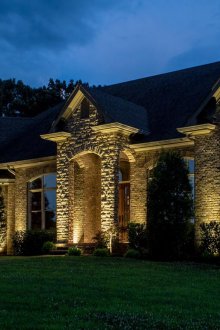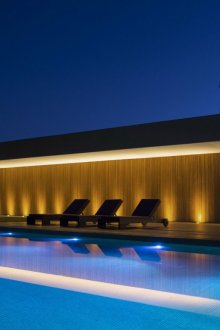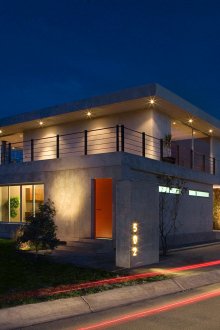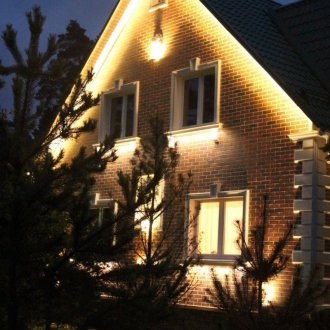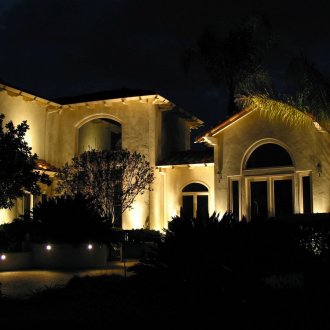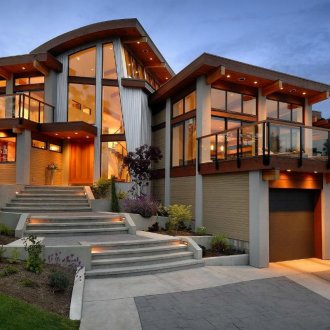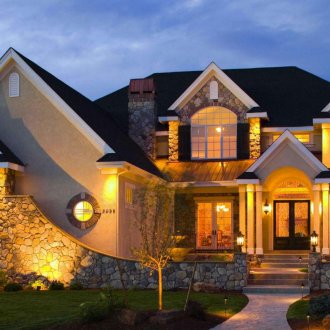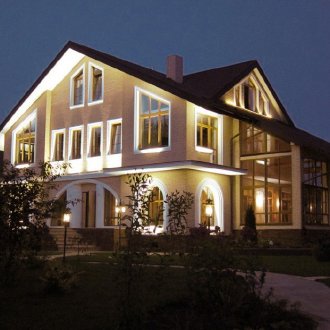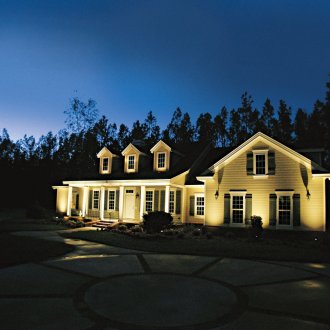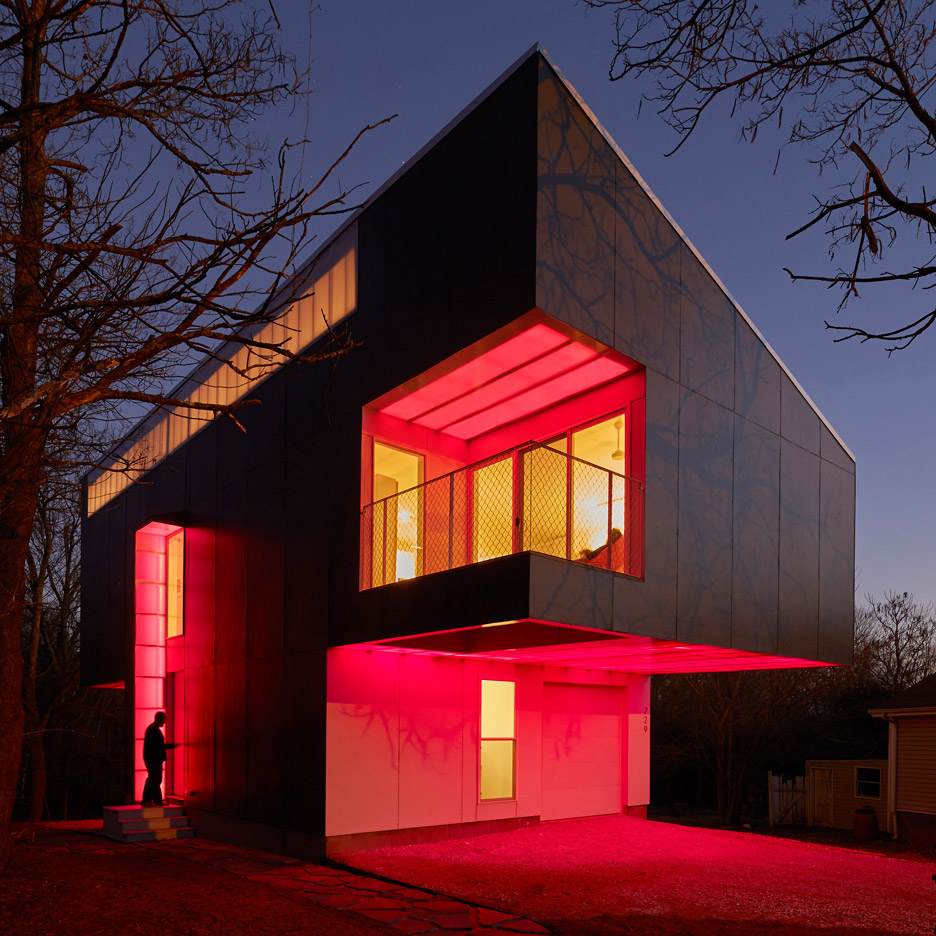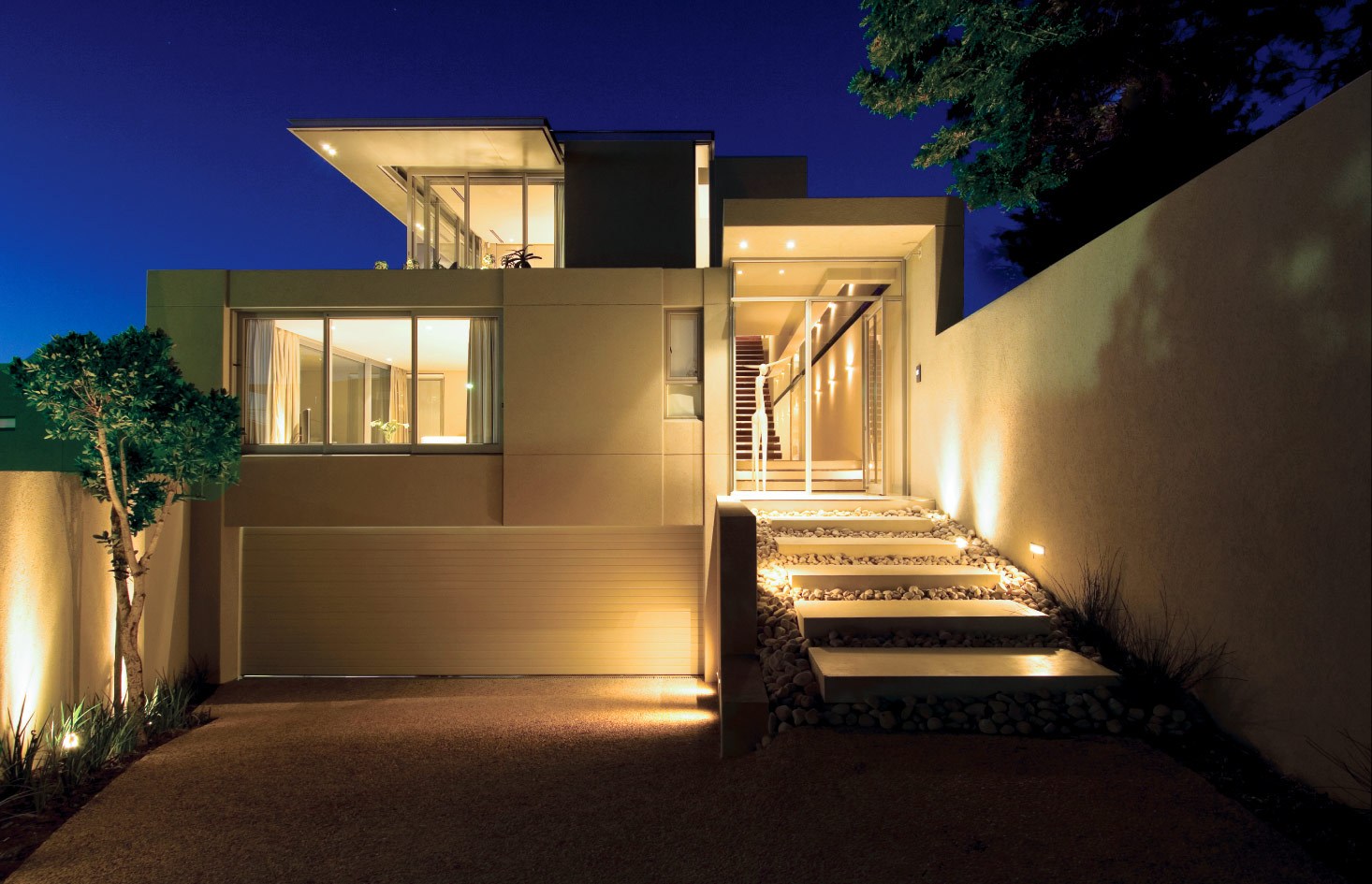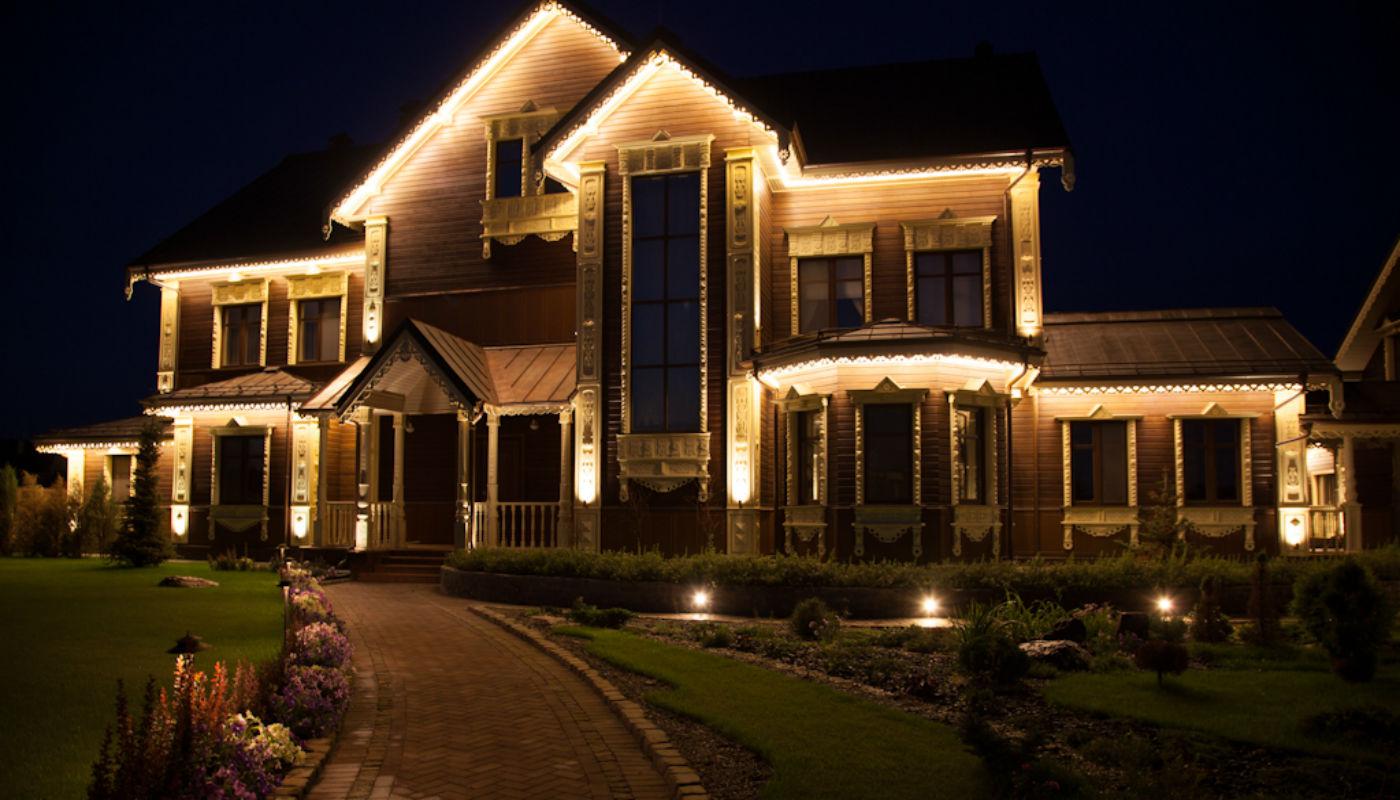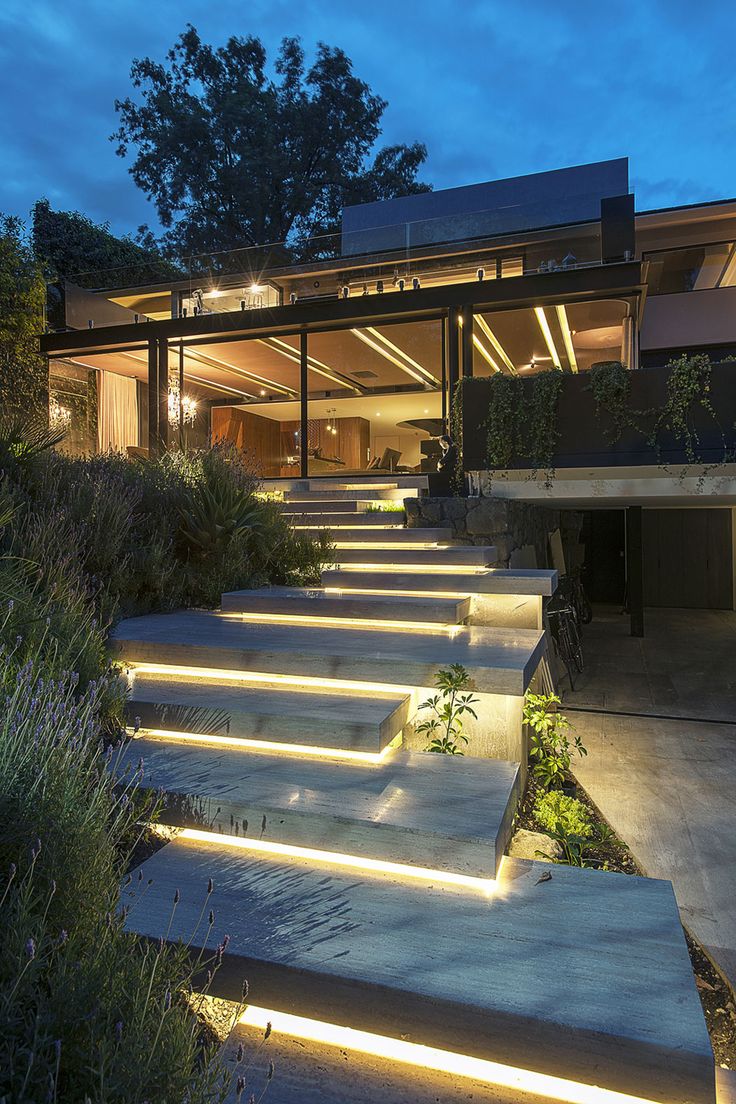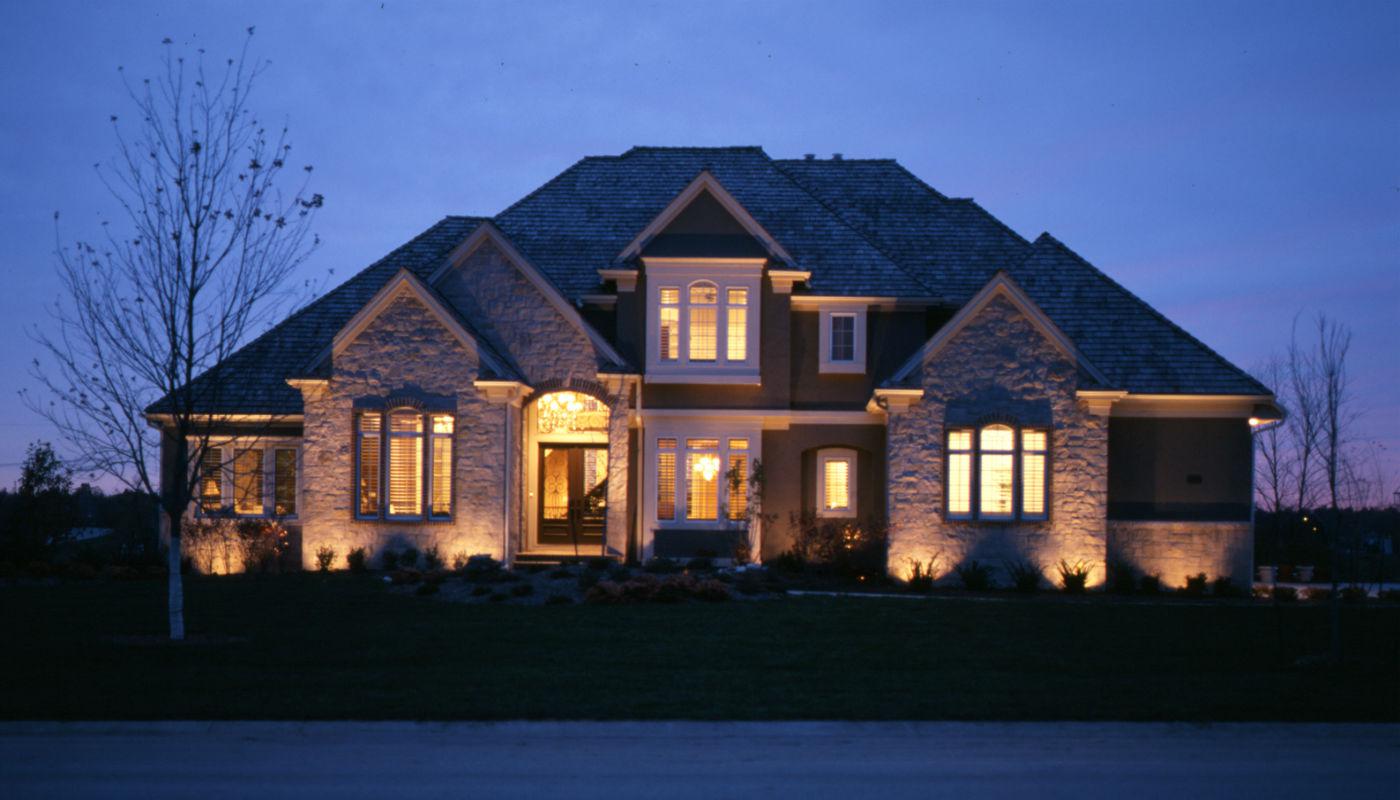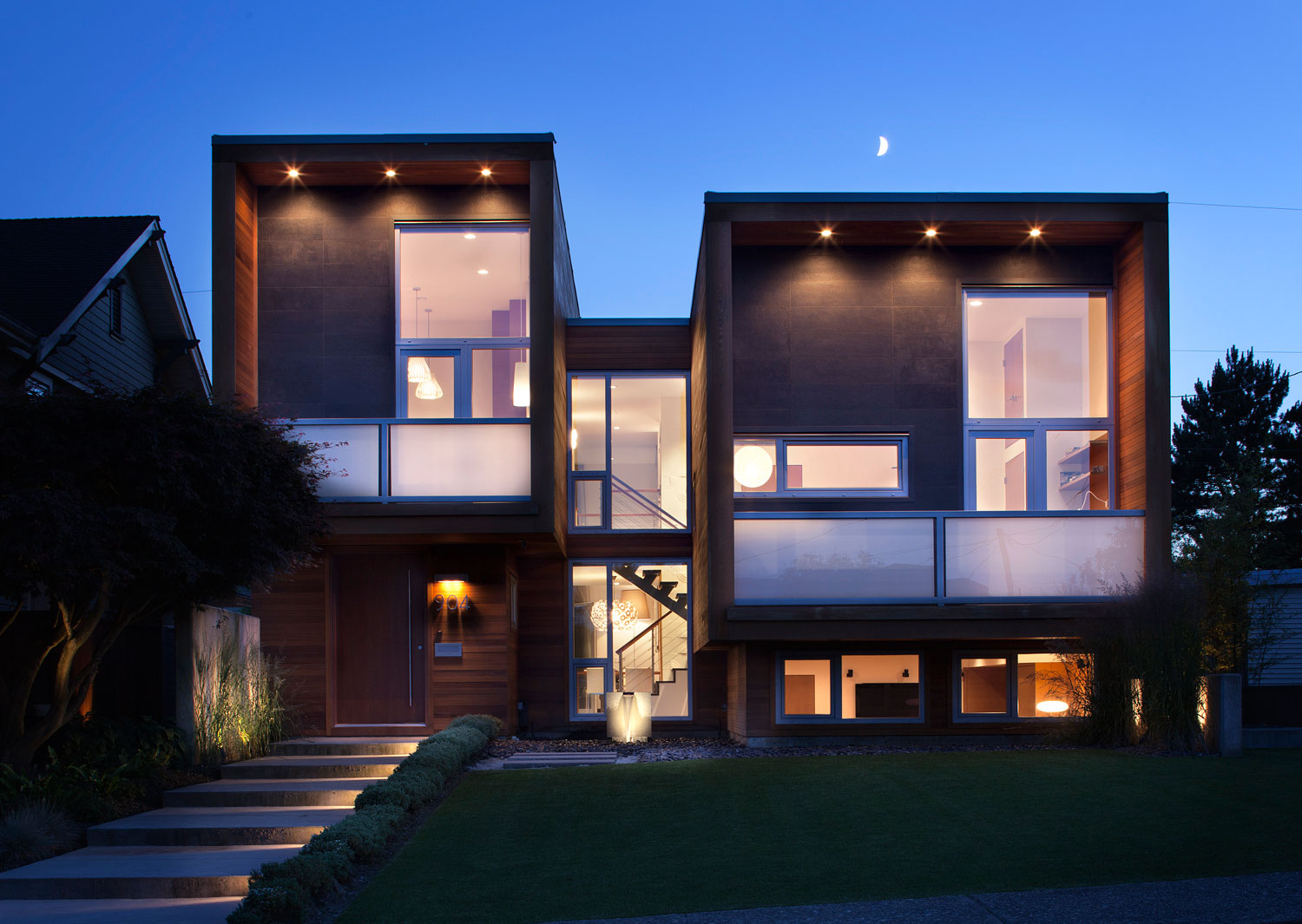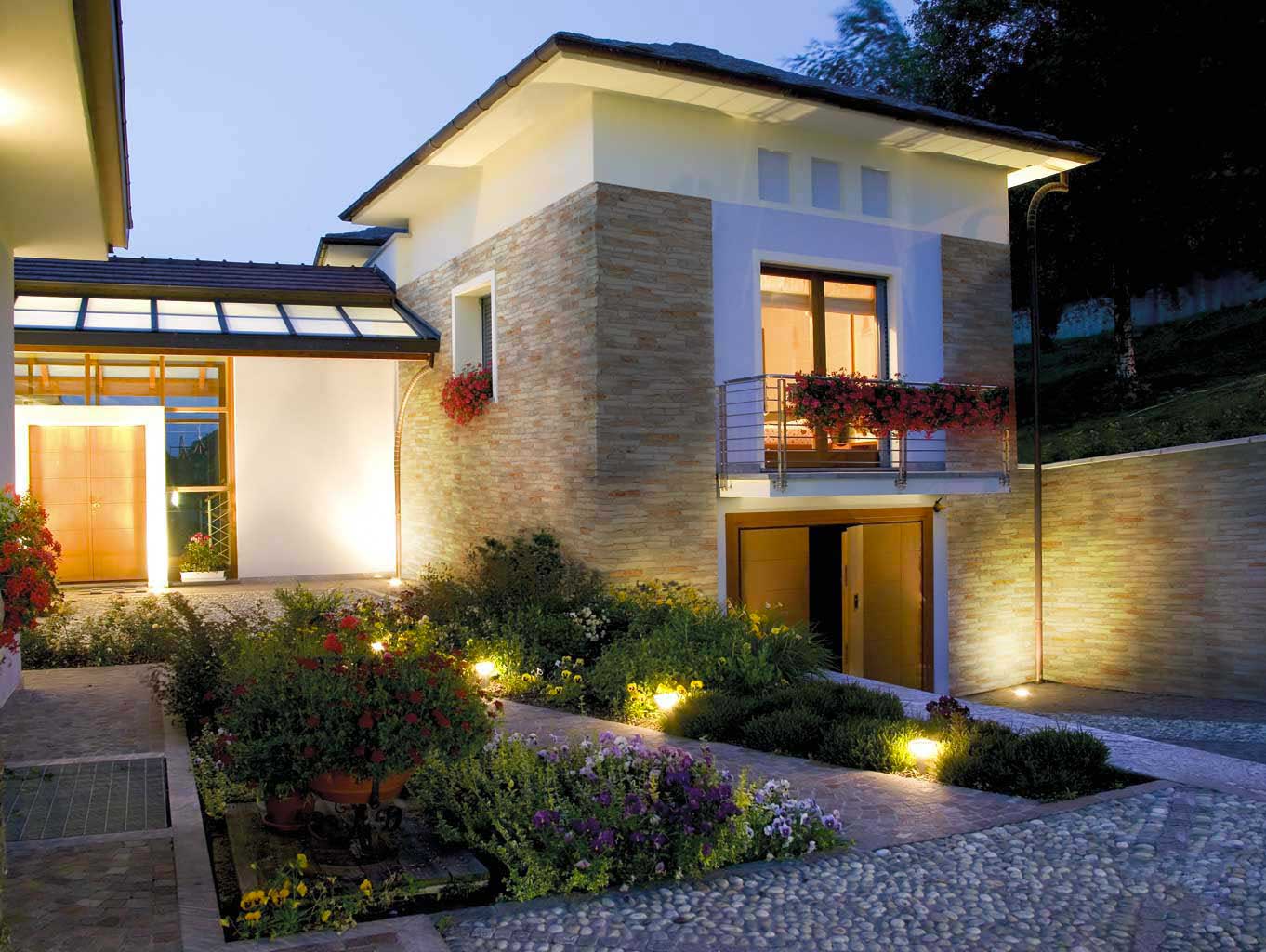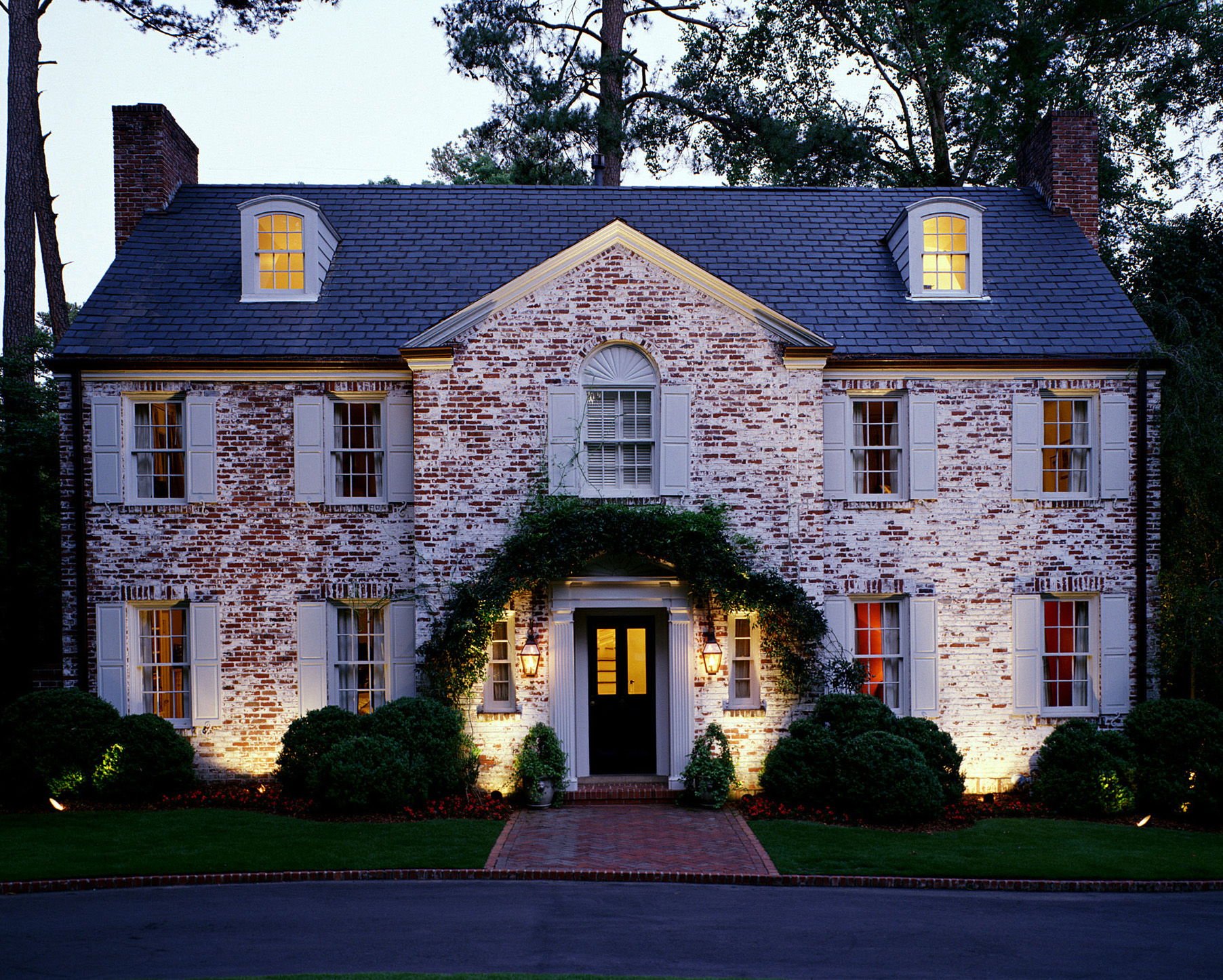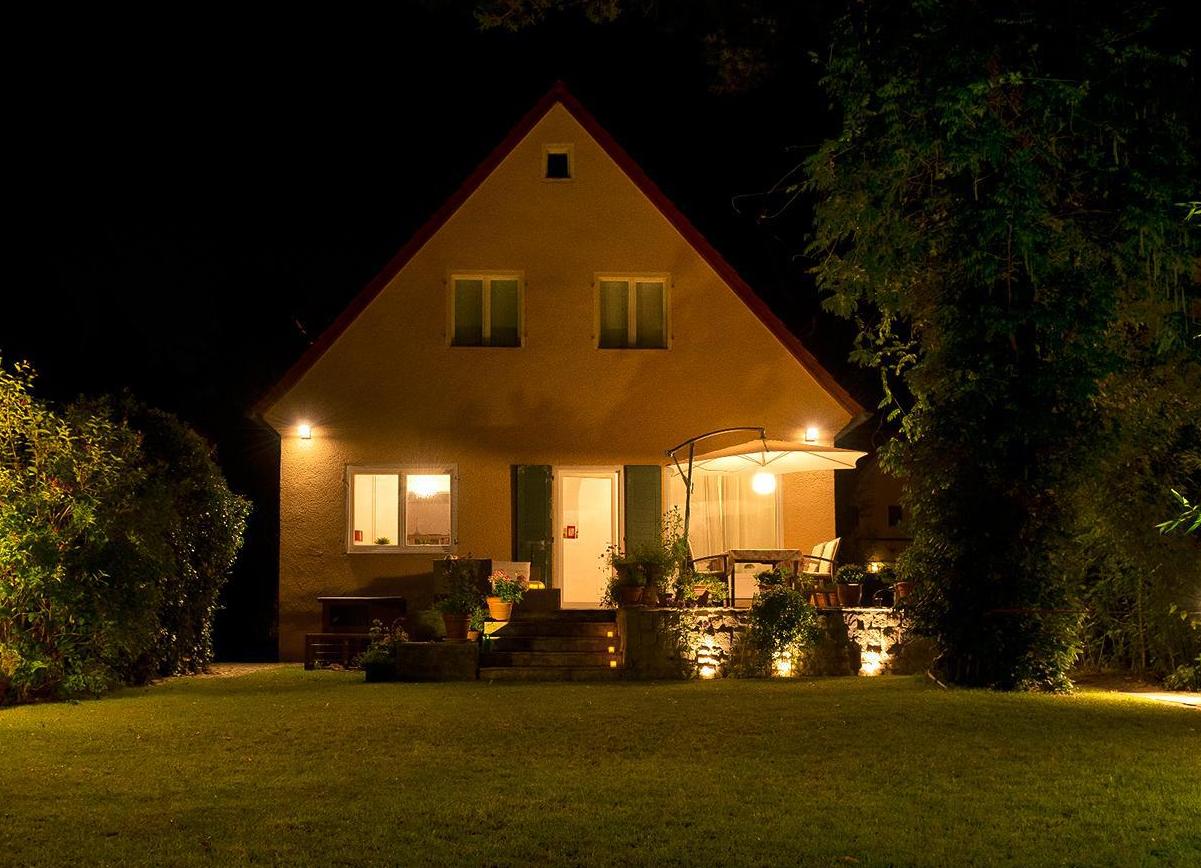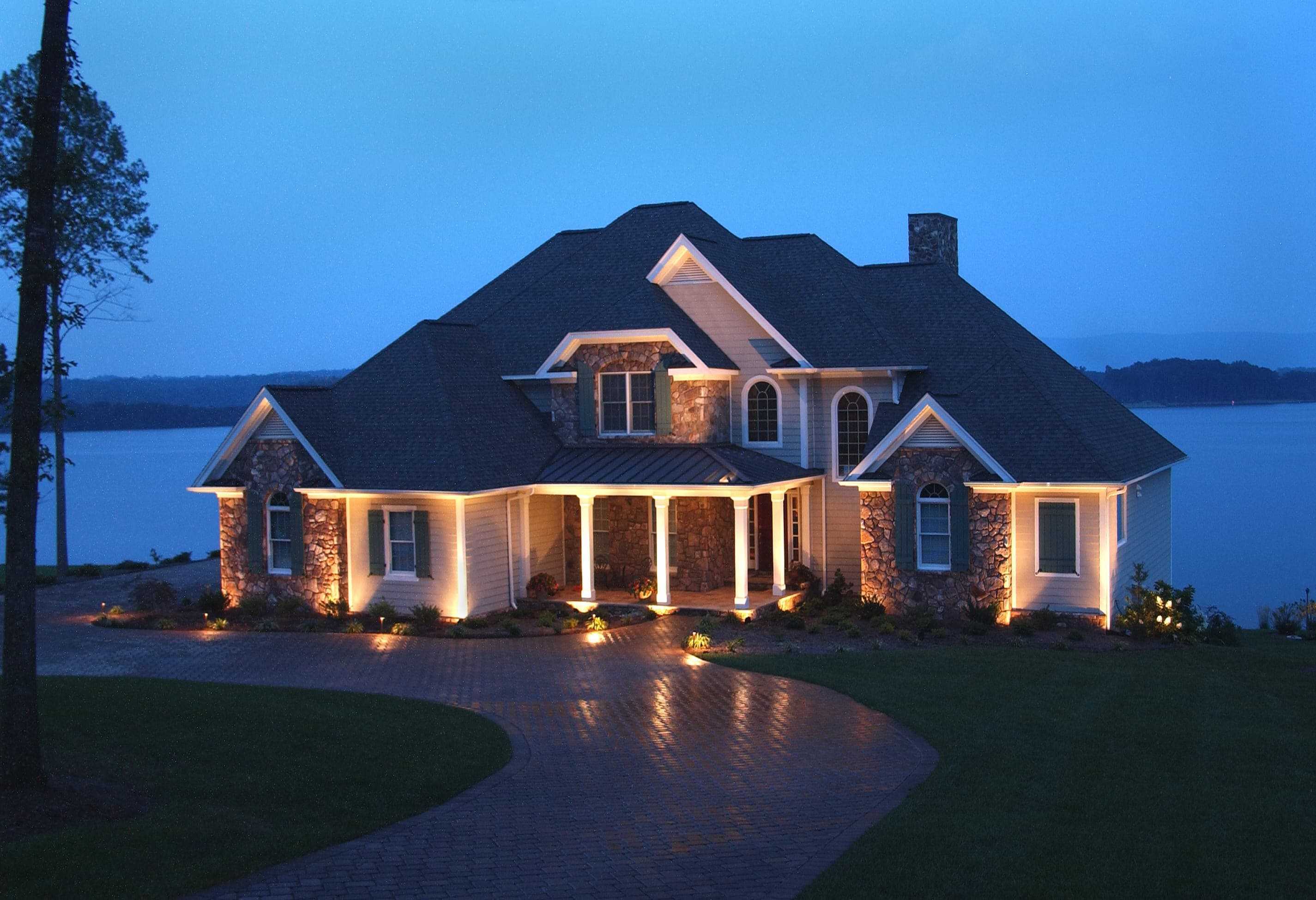Facade decorative lighting: pros and cons (24 photos)
Content
Decorative illumination of the facade of the building is quite a popular phenomenon in the field of lighting design. Outdoor lighting of the subject of architecture is used to highlight the uniqueness of the structure itself, as well as its beauty. Architectural lighting makes it possible to distinguish the building against the general background among other buildings, which emphasizes the status of the owners of the house. Facade lighting is characterized not only by aesthetics, but also by completely comfortable conditions for relaxation.
The main types of lighting for architectural structures
Sometimes designers organize night lights for construction, using several varieties of illumination at once.
Flood light
The illumination of the flood view makes it possible to demonstrate the architectural concept of the creators, as well as to emphasize the style of the building in the most efficient way. Lighting of this type is usually used to distribute light on the interior of concrete or stone classical buildings and historical monuments.
Illumination devices are placed on the surface of the roofs of buildings or are installed on the ground (lamps for illumination).
However, this type of lighting only functions normally together with directional lighting, designed to highlight the most curious details of the structure itself. Directional illumination is created using small-sized devices that exhibit a small level of power during their operation. Typically, such installations are located on special supports, illuminating the entire perimeter of the structure.
Local lighting
The facade illumination of a house of this type is used to pinpoint the most expressive architectural parts of the building: columns, small tablets and relief.
Illuminated facade of a country house with hidden structure
The lighting design represents 3 main types of backlighting, local as well as hidden.
- The silhouette illumination of a country house creates vivid and very memorable shapes in the absence of detailing of extraneous inexpressive elements.
- Contour lighting provides the building with a light shine. To create something like this, you will need to equip the facade contour with LED strip or neon.
- Special highlight with color dynamics. It is a combined backlight model that allows you to change the level of power with which the glow is produced, the color palette and chiaroscuro.
Instructions for the organization of facade lighting
When the facade of a private house is designed to be illuminated, the landlord deals with both tasks at once: the building acquires decorative notes and ensures maximum safety and comfort of movement around the territory in the evening.
Regardless of the appearance your site has on the outside, the correct light playing up will give the facade brightness and mystery. The building will look modern and at the same time have architectural notes of the Middle Ages.
To achieve the right effect, experts in the field of design of illumination offer 2 options:
- Before you make a beautiful backlight, you will need to correctly place the projector installations on the site. Lighting systems will shed light on the surface of the building from several sides.
- Devices on a wooden or stone facade can be placed pointwise. This approach will allow us to successfully highlight the main advantages of the elements of architectural structures.
It will be important to take into account the fact that not every kind of lighting used to give a special touch to urban buildings can be suitable for illuminating a private house. For example, the illumination of a flood-in sample may not wedge into the situation, since the floodlight is designed primarily for a very high level of height, which does not differ in private buildings. Among other things, this kind of lighting should be directed to the window frames, which is why owners often experience discomfort.
Before making a backlight, it is recommended to use the down-light fixtures to change the angle of the lamps. Despite the fact that these devices do not take up much space, they can demonstrate a light effect that is identical to a small spotlight.
Directional lights equipped with halogen lamps allow you to create very specific effects by adjusting the radius and direction of the main beam. LED backlighting, using the least amount of energy, can create a flood of light in a uniform and very powerful way.
It is possible to make lighting also with a strobe, multi-colored illumination and bollards, as these lighting elements are perfectly combined with lamps for the facade.
In a successful way, decorative flashlights, as well as bollard supports, can be used to illuminate the area that is located directly in front of the building.
To illuminate the blind area of the building and the porch, it is recommended to use lamps with distributed illumination. Such structures, thanks to special reflective surfaces, provide uniform illumination.
It is important to note the fact that the devices for illuminating the territory, mounted on brackets, in the daytime can introduce an unpleasant visual feature into the external structure of the facade of the house.
During the design of the architectural lighting system, it is necessary to strictly follow all the rules of energy consumption. The backlight should be not only economical, but also practical in operation. For this purpose, the system is divided into 2 main zones: lighting of the main and side entrances or additional lighting with the installation of separate lighting devices.
Selection of acceptable equipment
The choice of the main configuration of illumination devices should be based on the size of the territory, as well as the specifics of the building. The fundamental elective factors are:
- ownership of the equipment used;
- main type of lighting installation;
- type of fastening;
- mounting system.
Since the basic task of lighting electronic equipment is to emphasize the artistic aesthetics of the house and create a certain level of security for the territory, you should familiarize yourself with the technical features of the devices.
The super-technical device must comply with specific safety standards. Their total number is attributed to electrical safety, dust and moisture resistance, the creation of protection against mechanical stress, suitability for specific climatic conditions.
Basic points related to the arrangement of architectural lighting:
- the lighting system works thanks to the use of lighting systems equipped with protective equipment of the IP65 type;
- it is best to choose lighting devices that have aluminum cases;
- diode lighting must be powered by a transformer.
